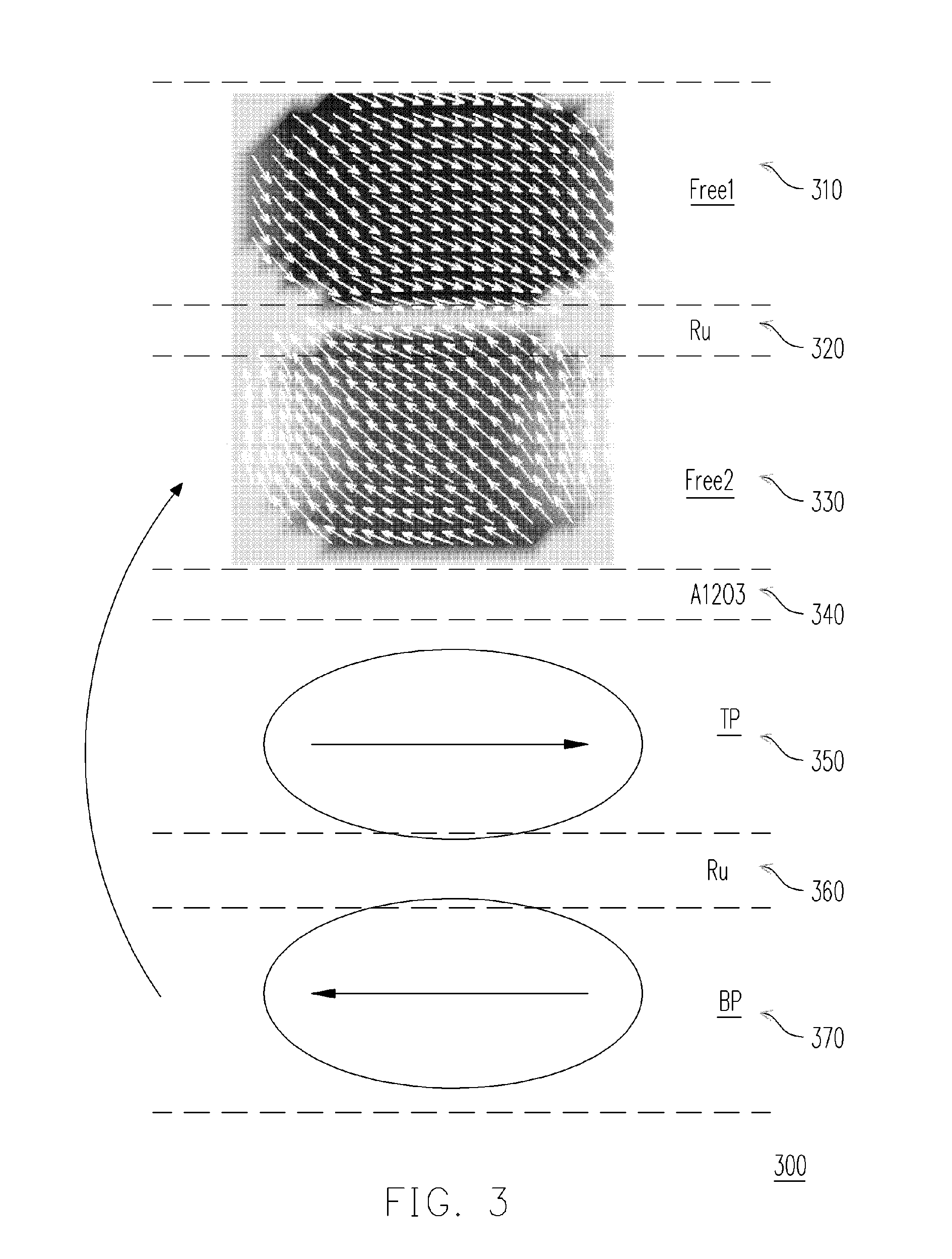Magnetic memory cell and manufacturing method thereof
- Summary
- Abstract
- Description
- Claims
- Application Information
AI Technical Summary
Benefits of technology
Problems solved by technology
Method used
Image
Examples
first embodiment
[0041] The magnetic memory in this embodiment can be a single free layer as shown in FIG. 6, or a sandwiched SAF free layer as shown in FIG. 7, which will be illustrated in detail below. The data state is determined by the magnetic memories in such a way that the parallel or anti-parallel arrangement of the two magnetic layers on both sides of the tunneling barrier layer (Al2O3 or MgO) are utilized to determine the data stored in the memory cell.
[0042] The magnetic tunneling junction (MTJ) with a single free layer as shown in FIG. 6 includes a free magnetic sector, a tunneling barrier layer, an SAF pinned layer, and a bottom electrode. The free magnetic sector includes a top electrode 610, a ferro-magnetic (FM below) free layer 620, wherein the FM free layer 620 is made of, for example, NiFe / CoFe, CoFeB, or an SAF free layer, etc. The tunneling barrier layer 630 can be made of Al2O3 or MgO for insulating the wider SAF-BE pinned layer 640 capable of producing a bias field. The SAF-B...
second embodiment
[0049] The magnetic memory in this embodiment can be a single free layer as shown in FIG. 10, or a sandwiched SAF free layer as shown in FIG. 11, which will be illustrated below in detail.
[0050] The MTJ with a single free layer in this embodiment as shown in FIG. 10 includes a free magnetic sector, a tunneling barrier layer, an SAF pinned layer, and a bottom electrode. The free magnetic sector includes a top electrode 1010, and an FM free layer 1020. The FM free layer 1020 is made of, for example, NiFe / CoFe, CoFeB, or the SAF free layer, etc. The tunneling barrier layer 1030 is made of Al2O3 or MgO for insulating the wider SAF-BE pinned layer 1040 capable of producing a bias field. The SAF-BE pinned layer 1040 includes a magnetic pinned layer or an SAF pinned layer (such as CoFe / Ru / CoFe), such as a top pinned layer 1042, a magnetic coupling spacer layer 1044, and a bottom pinned layer 1046 shown in the drawing. A bottom electrode (BE) definition is provided at the bottom part, whic...
PUM
 Login to View More
Login to View More Abstract
Description
Claims
Application Information
 Login to View More
Login to View More - R&D
- Intellectual Property
- Life Sciences
- Materials
- Tech Scout
- Unparalleled Data Quality
- Higher Quality Content
- 60% Fewer Hallucinations
Browse by: Latest US Patents, China's latest patents, Technical Efficacy Thesaurus, Application Domain, Technology Topic, Popular Technical Reports.
© 2025 PatSnap. All rights reserved.Legal|Privacy policy|Modern Slavery Act Transparency Statement|Sitemap|About US| Contact US: help@patsnap.com



